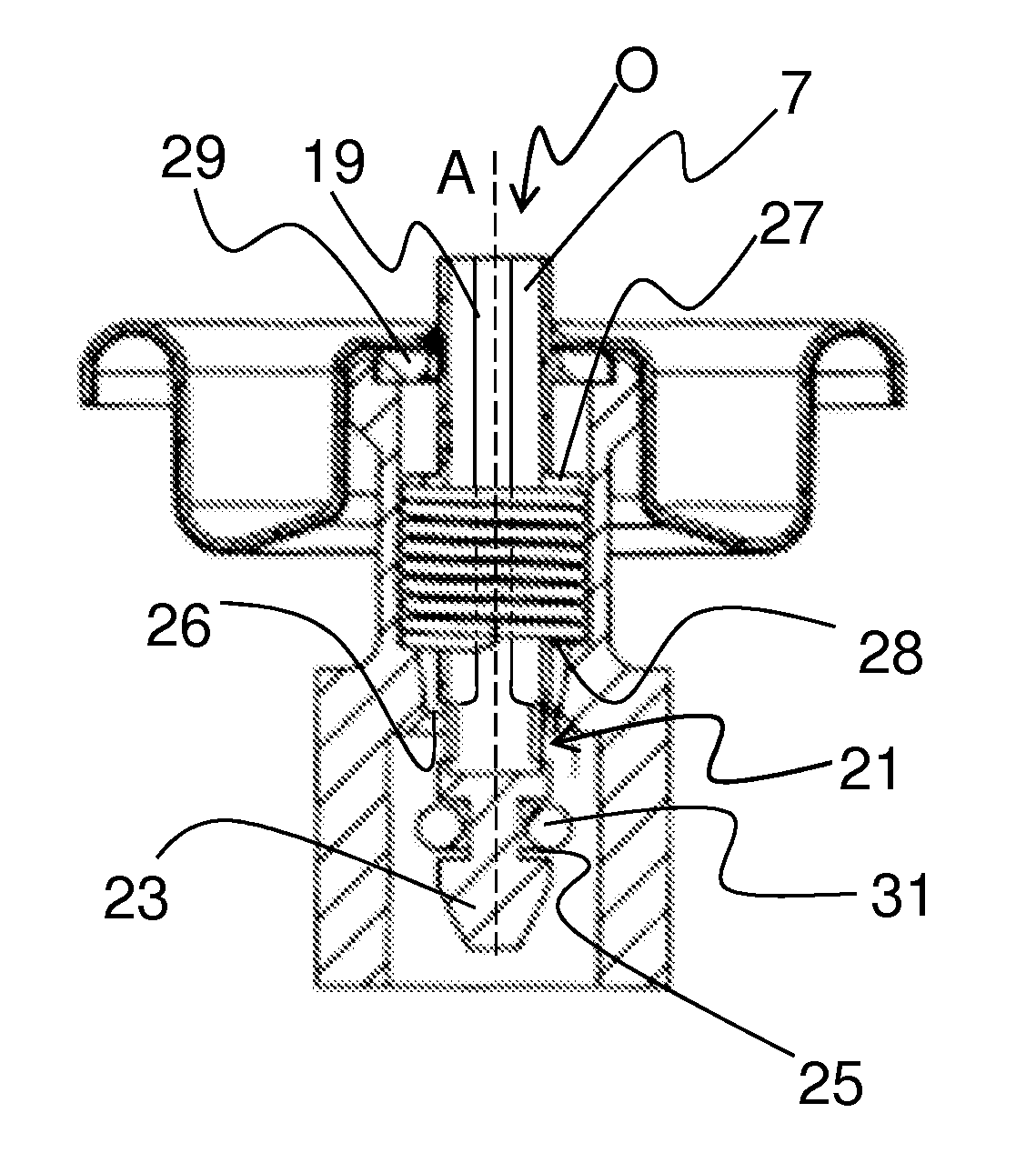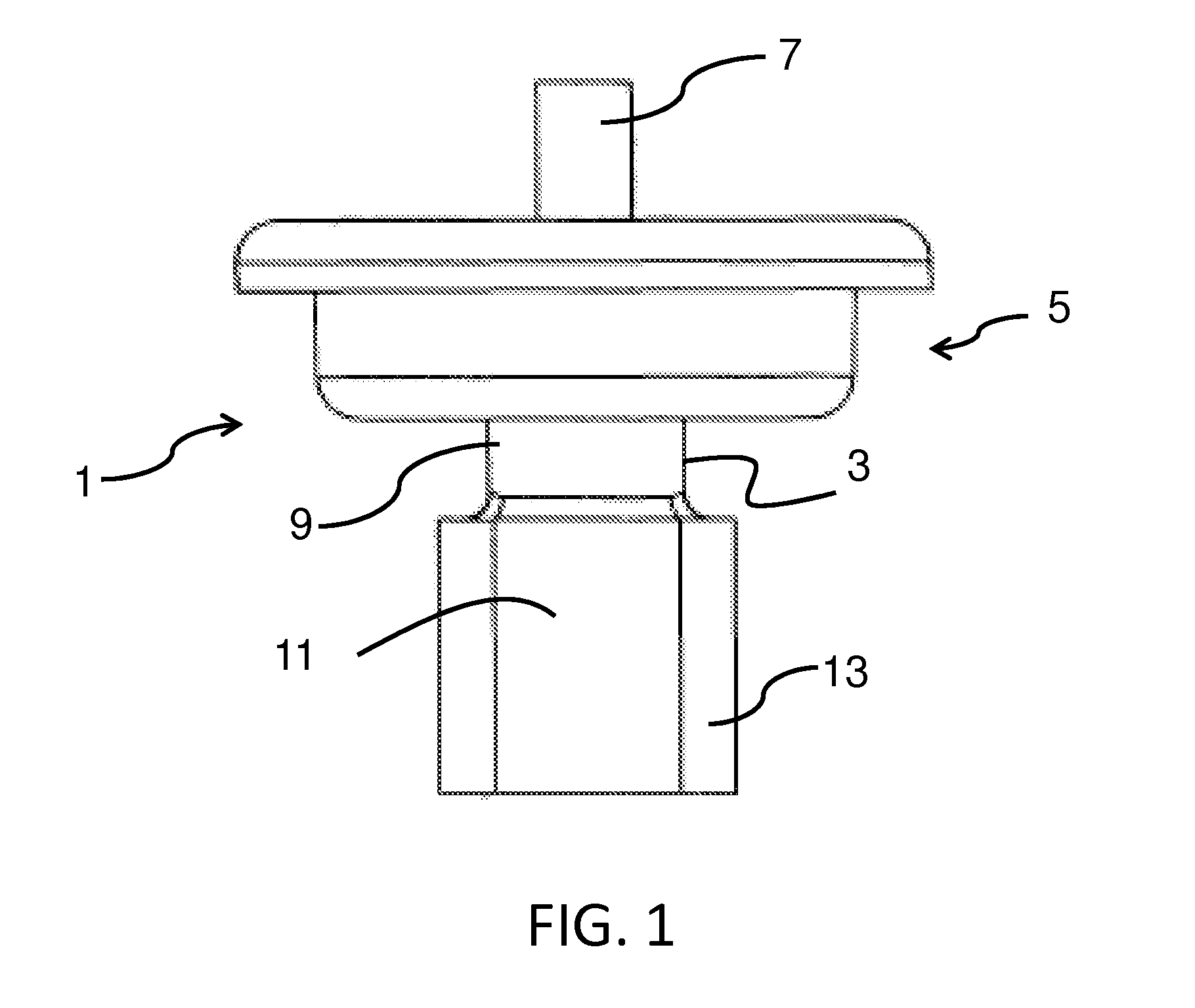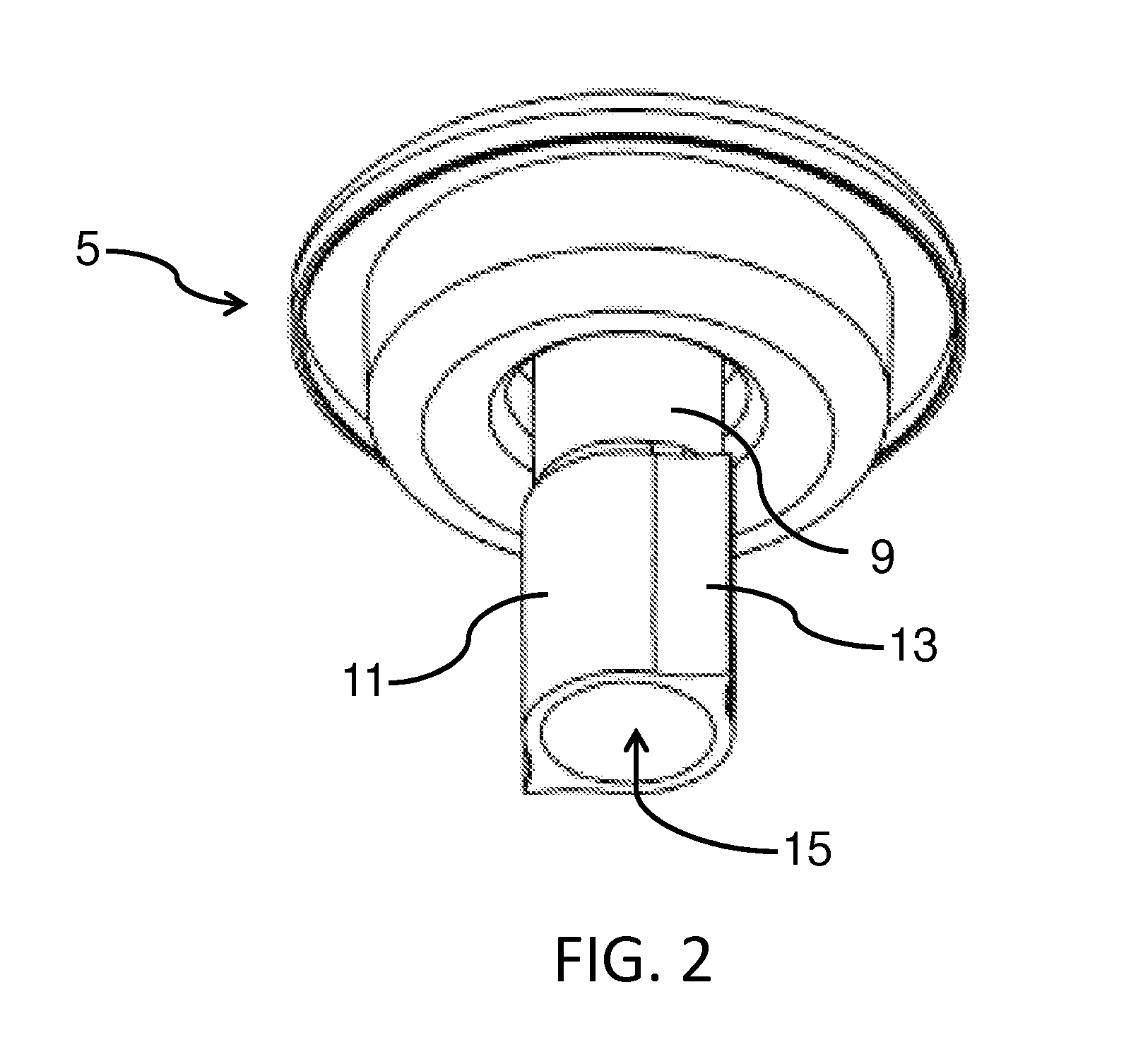High flow aerosol valve
a technology of aerosol valve and valve stem, which is applied in the field of valves, can solve the problems of limiting the flow rate of products out of containers and through the valve stem, affecting the structural integrity of the valve stem, and limiting the product flow rate, etc., and achieves the effect of high flow ra
- Summary
- Abstract
- Description
- Claims
- Application Information
AI Technical Summary
Benefits of technology
Problems solved by technology
Method used
Image
Examples
first embodiment
[0030]FIG. 1 illustrates a side view of an embodiment of the present invention illustrating the valve 1 in conjunction with the mounting cup 5 for a product containing can or container (not shown) in a bag-on-valve system. The valve stem 7 is parallel with and extends out of the valve housing 3 through the mounting cup 5. The valve housing 3 has multiple sections or portions that correspond to different functions for the bag-on-valve application. As is known in the art, a top portion of the valve housing is engaged generally by crimping with the mounting cup to secure the valve housing 3 to the mounting cup 5. The middle portion of the valve housing 3 is the spring cavity 9, which generally houses a spring for controlling dynamic movement between the valve stem 7 and the valve housing 3. The bottom portion 11 of the valve housing 3 can engage with either a dip tube, or as described in the first embodiment, with a product bag in the case of a bag-on-valve. In the present embodiment t...
second embodiment
[0040]Another important aspect of the present invention is the shape of the bores 35 which can facilitate control over dispensing of product at a high flow rate through the valve. FIG. 6 illustrates a side view of the valve stem 7 of the second embodiment with the bore 35 having a substantially circular shape. The bore 35 is a radial orifice in the sidewall of the valve stem 7, and adjacent the lower end thereof, which can be of a larger diameter than the 1.02 mm-1.52 mm (0.04-0.06 in.) diameter opening conventionally known, for example a diameter of between about 1.02 mm-3.81 mm (0.04-0.15 in) and more preferably in the range of about 2.03 mm-3.05 mm (0.08-0.12 in.) The larger bores 35 do not significantly affect the structural integrity of the valve stem 7 since the bores 35 are close to the bottom end of the valve stem where radial forces from depression and actuation of the valve stem 7 by a user are insignificant. Axial forces can significantly damage the valve stem where the r...
PUM
| Property | Measurement | Unit |
|---|---|---|
| cross-sectional area | aaaaa | aaaaa |
| area | aaaaa | aaaaa |
| flow rate | aaaaa | aaaaa |
Abstract
Description
Claims
Application Information
 Login to View More
Login to View More - R&D
- Intellectual Property
- Life Sciences
- Materials
- Tech Scout
- Unparalleled Data Quality
- Higher Quality Content
- 60% Fewer Hallucinations
Browse by: Latest US Patents, China's latest patents, Technical Efficacy Thesaurus, Application Domain, Technology Topic, Popular Technical Reports.
© 2025 PatSnap. All rights reserved.Legal|Privacy policy|Modern Slavery Act Transparency Statement|Sitemap|About US| Contact US: help@patsnap.com



